
At the Origins of a System of Thought: Gaston Fessard and the Theology of As If
When the twenty-one-year-old Jorge Mario Bergoglio entered the novitiate of the Society of Jesus on March 11, 1958, the course of studies that lay ahead of him and the set of teachers who would be leading it did not shine with a particularly brilliant light. The manualist tradition, characterized by a neoclassical approach, was weighed down by formulas far removed from real life. Pope Franciss lapidary judgment of this approach, expressed in his 2013 interview with Father Spadaro, is eloquent: We must not confuse the genius of Thomas Aquinas with that of decadent Thomist commentaries. Unfortunately, I studied philosophy from textbooks that came from decadent Thomism.
It would be a mistake to understand Franciss comment as criticism of the thought of Thomas Aquinas. In a preface he prepared for Enrique Ciro Bianchis book on Rafael Tello (a theologian of Argentine popular devotion), Bergoglio wrote that he was impressed by how much Tellos thinking owed to Thomas: In an era that has set aside the Summa theologica, when anyone who dares to teach based on the Summa is considered an antediluvian beast, [Tello] In fact, a Thomistic character is one of the constants of Bergoglios thinking; this is where his gnoseological-metaphysical realism and his appreciation of the tangible world find their source.
Young Jorges studies included two years of novitiate, a year of juniorate while studying the humanities, three years of philosophy, three years of teaching, three years of theology, and one year of tertianship: thirteen years in all, from 1958 to 1971. His philosophical and theological studies took place at the Colegio Mximo de San Jos, in the city of San Miguel in the Buenos Aires province. A thorough record of his teachers during that time no longer exists. Austen Ivereigh has observed that most of [Bergoglios] professors were old, foreign, and unprepared for... engagement with the contemporary world.
Not everything, however, was worth discarding. In his theological studies at Colegio Mximo, between 1967 and 1970, Bergoglio was influenced by the renewal of the Ignatian vision that had been set in motion by his philosophy professor, Father Miguel ngel Fiorito. One of Argentinas leading authorities on Ignatian spirituality, Fiorito
This different understanding of Ignatius and the contemporary value of his Exercises marked the difference between Bergoglio and, on one side, his elders in the order, who were immovable in their formulaic repetition of Jesuit tradition and, on the other, the moderns, influenced by new sociological perspectives coming out of the United States and Europe, who dismissed the spirituality of the Jesuits foundational texts as archaic and outdated. For the young Bergoglio, true reform of the church could not happen through an uncritical modernization, but through a thoughtful recovery of the teaching and the witness of Ignatius that took account of new circumstances and contexts. What guided him to a way of thinking that was both Catholic and open, understanding the value of the past, was the Second Vatican Council.
Like many who made up the new generation of Catholics in Argentina, Bergoglio was an assiduous reader of Criterio, a journal published in Buenos Aires under the editorship of Father Jorge Meja, which gave voice to new currents of thought coming out of France.seminary professors who would later become cardinals: Eduardo Pironio, who would serve as a close collaborator of Popes Paul VI and John Paul II, and Antonio Quarracino, who would one day persuade John Paul II to make Bergoglio a cardinal. Its editorial board and authors included Jorge Luis Borges, Homero Manzi, Francisco Luis Bernrdez, Baldomero Fernndez Moreno, Leonardo Castellani, Ernesto Palacio, Manuel Glvez, Ignacio B. Anzotegui, Julio Irazusta, Julio Meinvielle, Basilio Uribe, and Jos Luis Romero. The journal also published the work of important writers such as G. K. Chesterton, Hans Urs von Balthasar, Gerardo Diego, Eduardo Frei Montalva, Jean Guitton, Jacques Maritain, Julin Maras, and Gabriela Mistral.
Another periodical also served as a rich mine of ideas for young Bergoglio. This was the triannual Jesuit journal Christus, edited in France, starting in 1954, by Fr. Maurice Giuliani. In one of the audio recordings prepared by Pope Francis for the author, he recalls
reading the journal Christus under the direction of Father Giuliani. There were so many articles in the early daysthe journals approach changed laterbut in those early days, those of Fr. Giuliani, there were so many articles that inspired me. I believe that in the history of Catholic spirituality and especially of postconciliar spirituality, we cannot forget the work done by Christus, a magazine desired by Fr. Arrupe and the center of spirituality he founded and placed under the guidance of Father Luis Gonzalez, who contributed so greatly to the renewal of the Society. Here, allow me a digression. When Fr. Arrupe was elected, the Company was at such a point of uniformity that discernment was reduced to choosing between good and evil but not between good and better. For me, the greatest symbol of this reduction to uniformity was the Societys Epitome, under the guidance of Fr. Dchowski. When it was brought to the Abbot Primate of the Benedictines, he said: With this he killed the Society. He took away its mobility. Because everything was foreseen, the sources of the Society, of its rules.
This is an important window into the laboratory of the young Bergoglios thought. The articles published in Christus helped the Society broaden its horizon and overcome the immobility imposed on it by the Epitome, which Francis also mentions in his interview with Fr. Spadaro: There have been periods in the Society in which Jesuits have lived in an environment of closed and rigid thought, more instructive-ascetic than mystical: this distortion of Jesuit life gave birth to the Epitome Instituti.
Through Christus, Bergoglio was able to become familiar with the work of a French Jesuit who would later achieve great prominence: Michel de Certeau. His studies of Jesuit mysticism and in particular of Peter Faberwhom we will consider at greater length belowbecame very important to Bergoglio. They offered a deeper understanding of authentic Ignatian spirituality and provided important breathing room for Miguel ngel Fioritos efforts related to the Exercises. It is clear that Bergoglios formation took place within the intellectual world of the Society. His teachersnot those who lectured in the classes he attended, but those whose work formed his way of thinkingare the intellectuals, philosophers, and theologians of the Jesuit order. Among them, one author would have particular influence on him: the French philosopher-theologian Gaston Fessard.
In 1956, Fessard published the first volume of La Dialectique des Exercices Spirituels de Saint Ignace de Loyola, an important reference point in the thinking of Alberto Methol Ferr (whom we will consider at length below). It would become a major force in Bergoglios intellectual formation.
Perhaps the first contact [with Fessard] was between 1962 and 1964, Pope Francis said.
This is an acknowledgment of great importance. Bergoglio here points to Fessard as the key thinker in his intellectual formation. A Jesuit of the Lyons school and close friend of Henri de Lubac, Fessard identified deeply with Hegel and dialectics, an unusual direction in Catholic thought of the 1930s and 40s. Between 1926 and 1929, he translated and commented on the
Next page
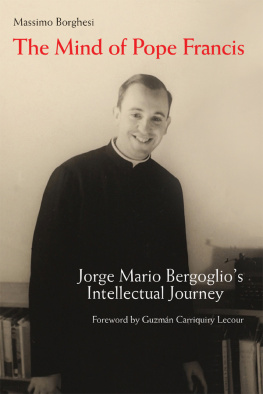
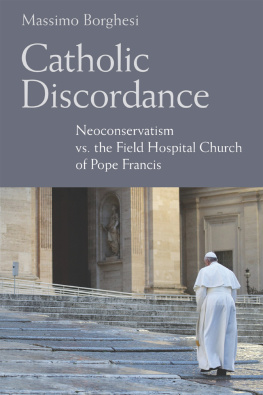
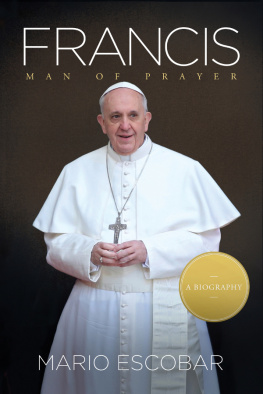
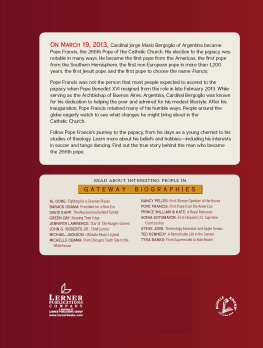

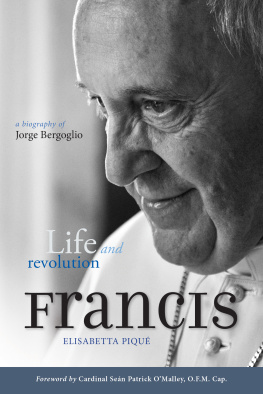
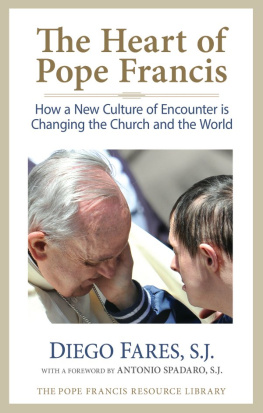
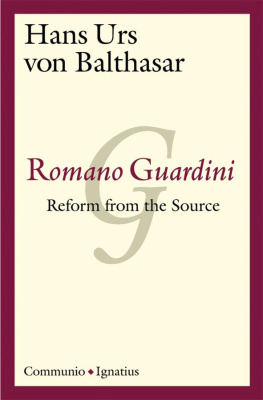
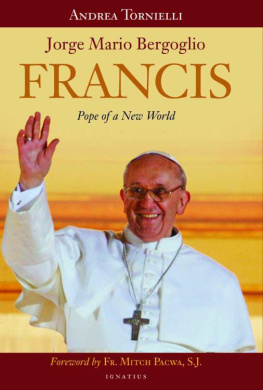
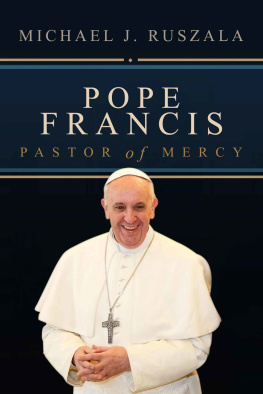
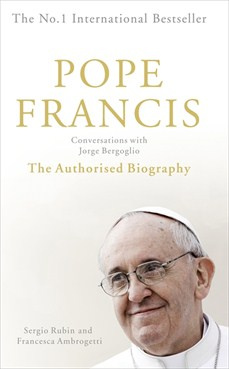
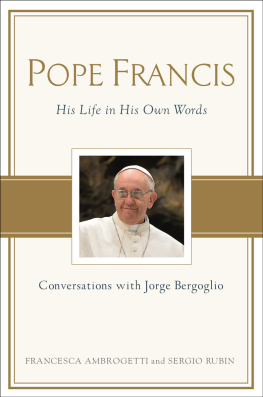
![Pope Francis [Jorge M Bergoglio] et al. - Open Mind, Faithful Heart: Reflections on Following Jesus](/uploads/posts/book/106755/thumbs/pope-francis-jorge-m-bergoglio-et-al-open.jpg)
